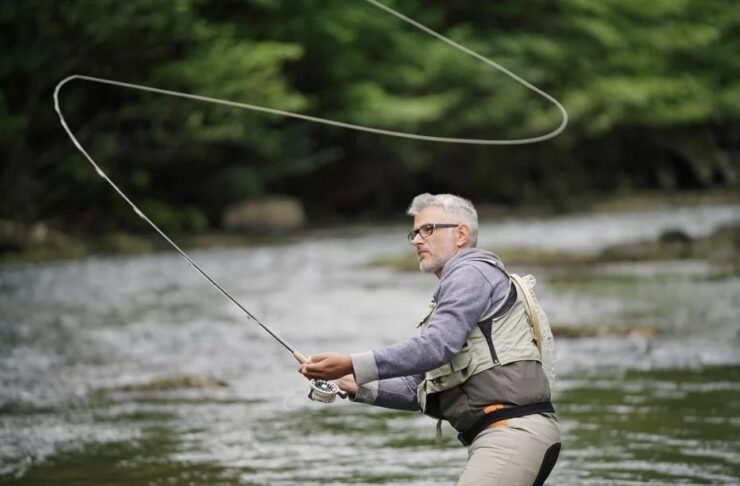Because fly fishing has traditionally consisted of fishing for various trout species in crystal clear mountain streams, many potential fly fisherman who would like to participate in this most fascinating form of fishing are dissuaded from doing so due to the fact that they do not live in or near the mountains.
However, the fact is that any fish species that will strike a conventional fishing lure will also strike a fly and, fly fishing equipment has evolved over the years to accommodate anglers who wish to take advantage of this fact. Therefore, regardless of where you live, as long as there is a body of water nearby that contains fish, you can use fly fishing equipment to catch them!
For instance, while most fishermen use conventional fishing equipment to catch their favorite freshwater fish species such as Smallmouth and Largemouth Bass, Pike, and Muskie on their local lakes, due to advances in fly rods, fly lines, and fly patterns, anglers who pursue freshwater fish species in stillwater can now enjoy the same level of grace, beauty, and challenge that traditional fly fisherman enjoy.
On the other hand, saltwater fly fishing has also become extremely popular among fly fishermen and thus, regardless of whether you prefer to search the surf, wade the flats, probe inshore waters or, plumb the offshore depths for pelagic fish species, there is fly fishing equipment designed specifically to meet your needs.
Then, of course, there are the many different types of rivers that populate and irrigate our landscape and, they too can all be effectively fished with fly fishing equipment.
For instance, rivers range from raging whitewater rapids to swiftly flowing currents to gently flowing turbid water to nearly stagnant black water and each type of river is home to various fish species that are specifically adapted to their chosen environment.
Thus, if you can walk the banks, wade the streambed, or float over it in a float tube, kayak, drift boat, or rubber raft, then you can use fly fishing equipment to catch any or all of the various fish species that call that stretch of water home.
However, because the ancient art of fly fishing was traditionally developed to enable anglers to catch ultra-wary trout in crystal clear streams by using artificial flies that closely imitate indigenous aquatic insects, a more detailed explanation of the different types of freshwater trout streams is in order.
Therefore, it is important to note that all trout streams can be characterized according to one of four different types of water consisting of Spring Creeks, Freestone Streams, Limestone Streams, and Tailwaters.
1. Spring Creeks
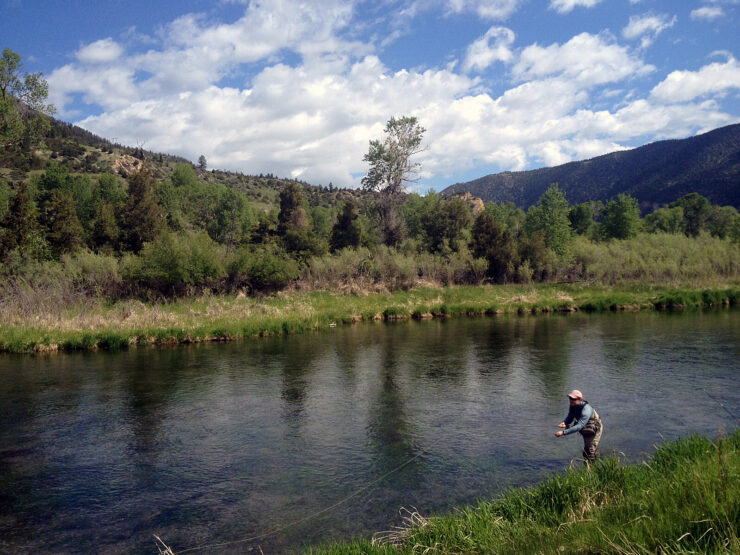
A Spring Creek is a stream who’s main source of water is derived from rainfall resulting in ground water accumulation and which has a relatively constant temperature. In addition, many Spring Creeks originate in mountain ranges that have extensive deposits of limestone which is much softer than the surrounding granite rock.
Thus, because the limestone erodes more easily than the harder rock, this erosion creates an extensive system of underground, mineral rich, creek, rivers, and reservoirs.
Therefore, when this mineral rich water emerges above ground as a spring and starts its journey downhill, it merges with other springs to form either a Spring Creek or a Limestone Stream which, in turn, creates an exceptionally rich environment for aquatic plants, aquatic insects, and trout.
Therefore, because both the water temperature and the volume of water in a Spring Creek is less erratic than that of a Freestone Stream and, because of their greater abundance of aquatic plants and aquatic insects, trout inhabiting a Spring Creek are generally larger than those inhabiting a Freestone Stream because they have a longer growing season and more food available to them.
2. Limestone Streams
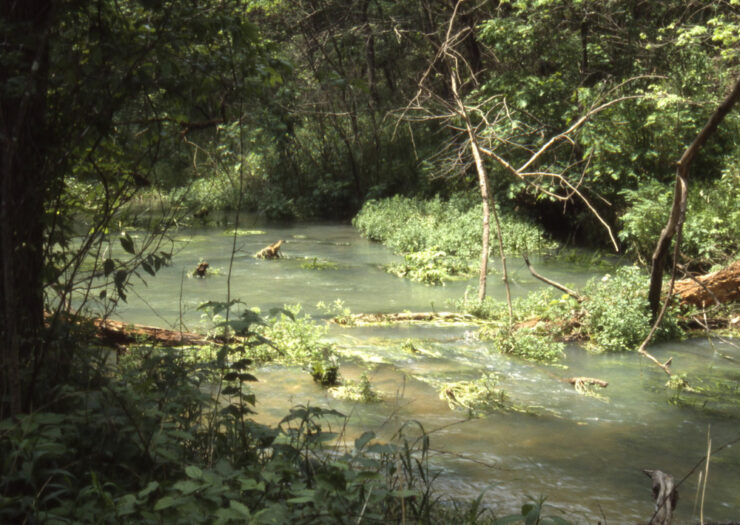
Next, we have Limestone Streams which are Spring Creeks that flow through large deposits of limestone either below and/or above ground and are most often associated with streams that have a relatively consistent water temperature and a relatively slow and consistent current.
Therefore, the phrase “Limestone Stream” is most often associated with streams that have a shallow gradient and a gentle current along with extensive beds of aquatic plants which, in turn, create an exceptionally rich environment for various species of aquatic insects as well as the trout that feed on them.
Consequently, Limestone Streams are the richest environment available to trout because of the profuse abundance of food, the lack of a swift current, and the lack of extreme temperatures. Therefore, fish inhabiting Limestone Streams are often notably larger than fish inhabiting any of other three types of trout streams.
3. Freestone Streams
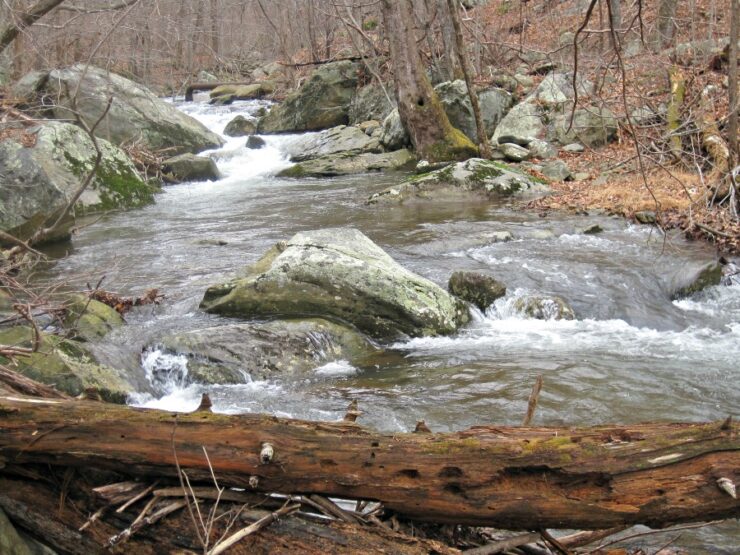
A Freestone Stream on the other hand is a stream who’s main source of water is derived from runoff created by either melting snow or rainfall.
Thus, they are characterized by drastically fluctuating water levels, steep gradients, and numerous whitewater rapids during periods of peak water flow. Therefore, because the supply of water in a Freestone Stream is so erratic, the volume of water in a Freestone Stream tends to peak during the early summer months and tends to fall to its lowest point during the late fall and winter months. Thus, a Freestone Stream is more readily influenced by the ambient air temperature than either Spring Creeks or Limestone Streams.
In turn, this results in a wider range of water temperatures than those of either Spring Creeks or Limestone Streams and thus, winter can cause Freestone Streams to reach freezing temperatures and summer can cause them to rise to temperatures as high as 70° F (which is the extreme upper limit of the temperature range within which trout can survive).
Therefore, because of the wide variation in both water volume and water temperature coupled with the lack of dissolved minerals in a Freestone Stream, the growing season of any trout that inhabit such streams is drastically shortened. Consequently, the fish that inhabit Freestone Streams are generally notably smaller than those that inhabit Spring Creeks, Limestone Streams, or Tailwaters.
4. Tail Waters
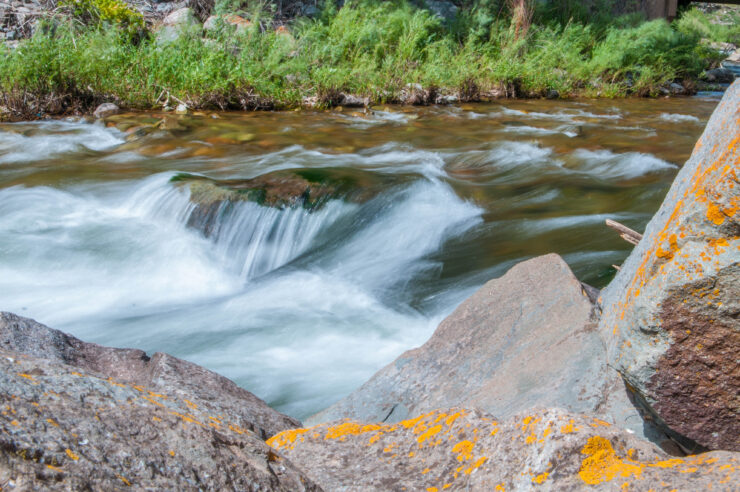
Last but not least, we have Tail Waters which are sections of a stream that are located immediately below a dam from which water in the reservoir above it is expelled from the bottom of the dam rather than allowed to spill over the top.
Thus, because this expelled water is drawn from the bottom of the reservoir, it contains significantly more dissolved oxygen than the water at the surface and, it maintains a consistently cold temperature which forms an excellent environment for various species of aquatic plants, aquatic insects, and trout for a couple of miles downstream of the dam even in relatively warm environments.
Consequently, most Tail Waters provide a very rich environment for trout because they remain at a relatively constant temperature throughout the year and, they tend to produce very prolific insect hatches along with providing an extended growing season for trout.
Therefore, trout inhabiting Tail Waters can easily be as large and as numerous as those inhabiting Limestone Streams and, both the terrain and the current are often much less rugged than that of a Spring Creek or a Freestone Stream.
Conclusion: “Where Can I Flyfish Near Me?”
Thus, with so many different types of water available to the fly fisherman, locating a place to fly fish is as easy as looking at a topographical map such as a DeLorme Gazetteer or, using the World Wide Web to access Google Earth.
These sources will, in turn, display all of the ponds, lakes, creeks, streams, and rivers within driving distance of your location as well as any roads leading to them.
Therefore, if you are one of those anglers who admires the grace and beauty of fly casting along with the unique challenges presented by fishing with hand-tied flies instead of manufactured lures, then the lack of a place to fly fish is no longer an excuse for not taking up this ancient form of fishing!
Adelaide Gentry, a seasoned kayaking enthusiast and expert, is the driving force behind KayakPaddling.net. With over a decade of experience navigating the world’s most challenging waterways, Adelaide combines her passion for adventure with a deep knowledge of kayaking to provide insightful and practical guidance for paddlers of all levels.
Related Posts:
- 14 Best Fishing Line for Baitcaster 2024 - For…
- 12 Best Fishing Lures Ever 2024 - Baits That…
- 10 Best Fishing Reel for Salmon 2024 - Reels for Big Gamers
- 9 Best Backpacking Fishing Rods 2024 - Lightweight…
- 10 Best Saltwater Fishing Boats - Ultimate Angling Adventure
- 10 Best Kayak Fishing Net for Anglers 2024 - Top Picks

